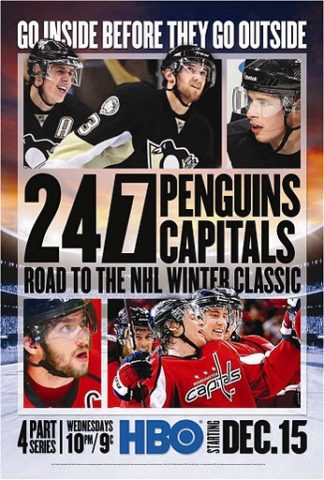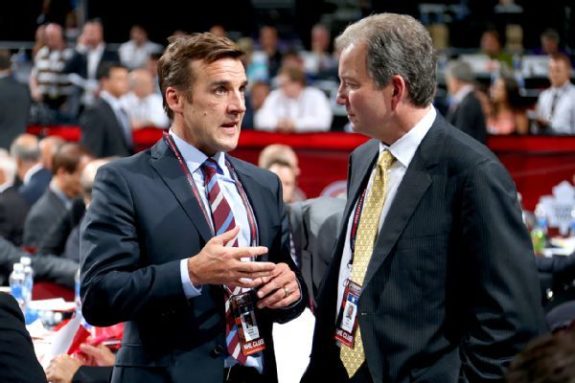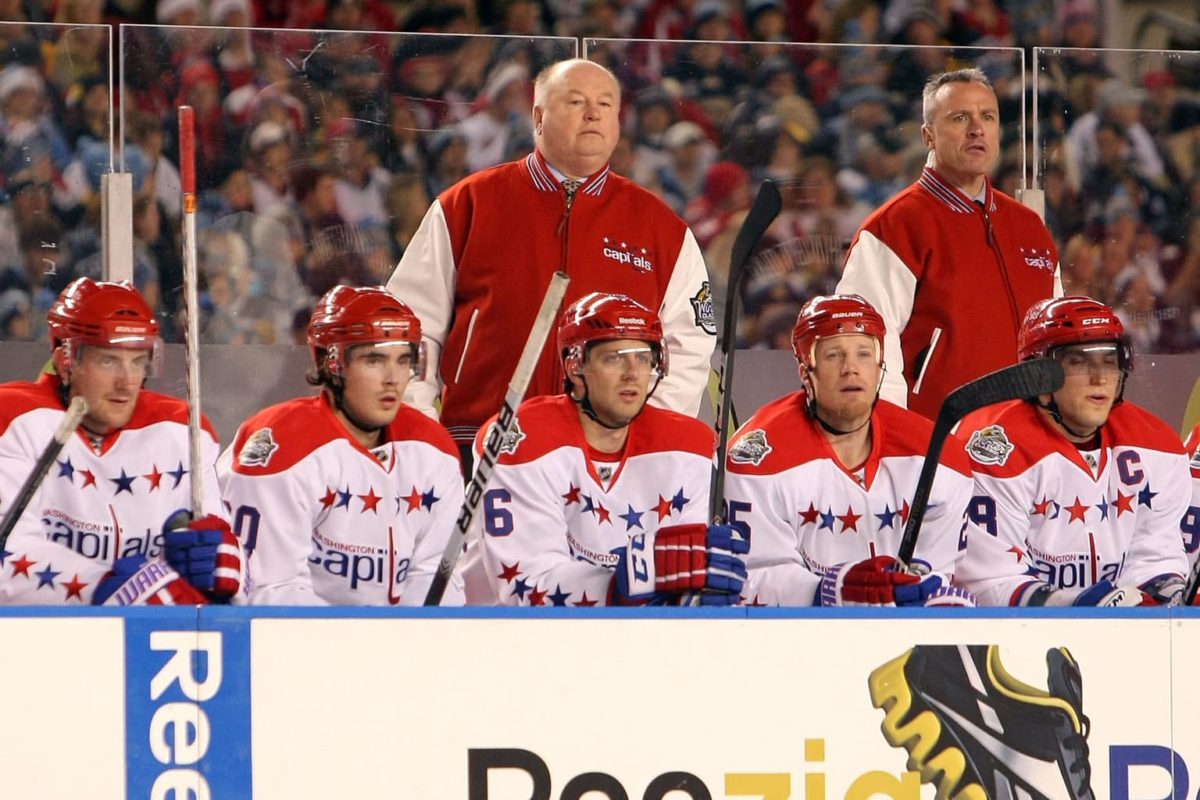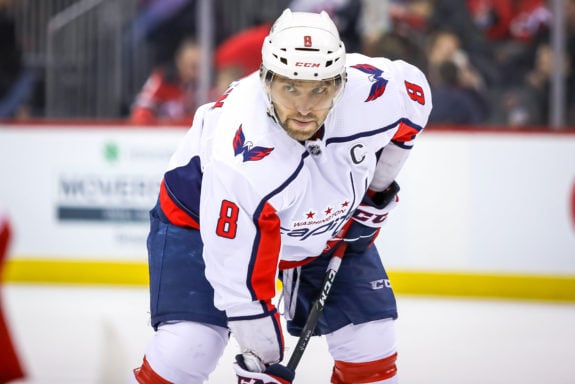While the Alexander Ovechkin-Sidney Crosby rivalry had been built up since the two players were the first picks in the 2004 and 2005 NHL Drafts, respectively, the 2011 Winter Classic really brought it to a national stage.
While it wasn’t the first-ever Winter Classic, it certainly was the one that came with the most hype in the event’s early days. The Washington Capitals had actually been angling to play the Boston Bruins at Fenway Park for the 2010 version. But NBC wanted to put the Philadelphia Flyers in that contest, so the Caps had to wait a year for their outdoor debut.
The game had it all: a four-part mini-series on HBO, a football-like feel under the bright light at Pittsburgh’s Heinz Field — home of the NFL’s Pittsburgh Steelers — and more than a bit of drama as the two teams who met in a memorable playoff series two years prior skated before a record TV audience.
With the 10-year anniversary of the 2011 Winter Classic this New Year’s Day, the game really proved to be a springboard for the Capitals onto the national stage.
“24/7” Lead-In to the Classic
Unlike the previous three outdoor games, the 2011 Winter Classic came with bells and whistles, as the run-up to the event was featured in a four-part HBO “24/7 Penguins/Capitals” series, which went behind the scenes and profiled the teams in the weeks before the outdoor game.

Fans at home got to see Bruce Boudreau eating ice cream at Tyson’s Corner Mall, Mike Green riding a scooter, as well as other scenes that truly were new to the National Hockey League and didn’t really have a lot of the high-visibility profiles outside the rink.
“It was shocking,” former Capitals public relations director Nate Ewell said of HBO’s arrival in a 2011 interview. “They do a good job of kind of blending into the background to the point where you’ll see them around and you kind of get used to it. Then, you’d turn the corner into the training room or weight room and forget they were going to be there, and they’re there.”
Despite the off-ice antics, Washington wasn’t exactly stellar on the ice during the first episodes of the series, and it wore on the team. The Caps lost eight in a row, leading to some angry coaches and players as the team battled a major slump — unlike the Penguins, who were rolling during the early filming.
“It’s a tough month, and HBO’s in here,” Boudreau told the players in a meeting before a game that was captured by HBO cameras. “But at the same time, I can’t watch what we’re going through without saying what needs to be said. … I guarantee you in the Pittsburgh locker room when they’ve won 10 in a row and they’re undefeated in 12 games, everything’s laughing and jokes.
“They’re going to be talking about two teams, one struggling and one having the time of their lives.”
From Capitals’ general manager George McPhee wincing after a crushing loss in the TD Garden elevator, to the audio of the coaches cursing out the team while getting beaten 7-0 at Madison Square Garden, fans saw the Capitals’ raw emotions on their screen — and something that wasn’t scripted.

Unlike the subsequent editions, where the images were massaged a bit by team PR departments and a bit more contrived, this first edition was raw emotion and really unlike anything fans had seen before — or since.
Hype and Marketing
The game also was just the second played at an NFL stadium, and the first since the 2008 debut in Buffalo, allowing for more fans to attend the event. Capitals fans, not really known for traveling at that point, snapped up roughly 30,000 of the 68,000 tickets available, ranging from $49 to $295 apiece.
For a fan base that had grown raw over Penguins fans attending games at the Capital Centre and MCI Center, it was a chance to travel en masse to their rival’s big event, and they took full advantage.
The team also brought back its original stars-and-stripes uniforms and stick logo from the 1970s for the occasion, along with the red pants they wore in their expansion season. While the team wore the jersey set as an alternate until the end of the 2015 playoffs, it was the first real nod back to their original logo — and one that also sold a lot of merchandise.
Reebok produced 38,000 total jerseys for the event, with roughly 15,200 of those being Washington sweaters. Merchandise sales for the 2011 Winter Classic was up 78 percent over the Boston-Philadelphia event the year before, and sold briskly at local stores.
Weather Creates a Football-Like Atmosphere
Originally, the game was slated for a 1 p.m. start, but heavy rain forecasted for New Year’s Day pushed the start time to 8 p.m., giving the Winter Classic a chance to be on prime-time network television.
Boudreau noted that while the 2011 Winter Classic was just one of 1,230 NHL games that regular season, it felt a lot more important.
“In the end it’s about two points,” Boudreau told reporters before the game. “But let’s not make a mistake. We’re all people that want the game of hockey to grow, and this is a big deal. To be part of this is very lucky, and in five years you’re going to sit back and whether you’re ever in one of these things again, it’s going to be a great thing.
“If we can help build hockey in the U.S. and in Canada and all over the world by putting on a great show for these people, it’s more than two points. It’s worth a lot more.”
While the morning rain had dissipated for a while, the ice was in rough shape in the previous days due to weather conditions and temperatures still around 50 degrees at faceoff. As night fell on Pittsburgh dressed in holiday lights, it felt more like a “Monday Night Football” tilt than an NHL game with both teams under the lights.
It also was the largest crowd ever to see Washington play, with its subsequent outdoor games being at Nationals Park in the 2015 Winter Classic and at Navy in the 2018 Stadium Series, neither of which comes near Heinz Field’s capacity.
Washington Wins the Battle
In the end, it still proved to be a bitter battle in the rivalry between the Capitals and Penguins, as although it was just a regular-season contest, it certainly carried more bragging rights than any non-playoff contest.

John Erskine and Mike Rupp got into a fight during the first period — just the second in the Winter Classic’s history — with the sloppy conditions hampering both teams’ ample skill sets.
Rain made its presence known for the second period, turning the fake snow around the rink into wet blankets, and the water on the surface began to stick around.
Evgeni Malkin struck first for the hosts early in the second period, but Mike Knuble’s goal just over four minutes later gave the red-clad minority in the crowd to make its presence known.
“You can see, you can hear when we score goals how many people [were] fans of Washington,” Ovechkin said at the post-game press conference. “I can see a thousand people in one spot, a thousand people upstairs, it was really unbelievable.”
Eric Fehr gave Washington its first lead late in the period due to a Marc Andre-Fleury miscue, and the Caps began to take control of the contest.
The game also came with controversy, as David Steckel and Sidney Crosby collided at a face-off circle in the Penguins’ end, leaving the Penguins’ star down on the ice before the end of the period.
The hit gave Crosby a concussion, the first of two he would suffer that week, and the injury would really cost the Penguins a chance at a second Cup in three seasons, as he missed ample time down the stretch.
Fehr iced the game in the third period by roofing a shot past Fleury, and the Capitals were able to celebrate a larger-than-normal two points.
“It felt unbelievable,” Fehr told reporters afterwards. “The first time we came out for the first period there, the fans were loud and it was just everything you kind of dreamed of. It was a perfect night. Nice and dark outside, with the lights, it was great.”
“It was one of the best feelings in my life,” Ovechkin said after the game. “When you see it’s sold out, it’s like I can’t imagine when football players play every game like this. It’s unbelievable.

“[You want to] go out and play like this all the time. And your family watching, your friends, and a million people watching you. When you get success, you get two points, you get excited and you just feel good about yourself and about your team.”
Winter Classic a Hit
The game drew 4.5 million viewers to NBC, which was the league’s most watched regular-season game since 1975. While the 2014 Winter Classic eclipsed the North American number, it remains the most-watched NHL regular-season game in the U.S. in the last 45 years.
The win was the highlight of the Capitals’ season, as while Washington was able to dispatch the New York Rangers in five games in the first round. But they were swept by the Tampa Bay Lightning in the second round — the same team that knocked out the Penguins in seven games the round before.
But from a national identity standpoint, the 2011 Winter Classic is really when the Capitals became more of a national presence on U.S. television and less of just a regional team that had confined to the Washington and Baltimore areas.
Even with their classic 2009 playoff series with the Penguins two seasons prior, it resonated a bit more, at least in Washington. And, for a team that didn’t get a whole lot of big wins against its rivals until the 2018 playoffs, it also gave the Caps a bit of bragging rights until they finally could claim a Stanley Cup title.